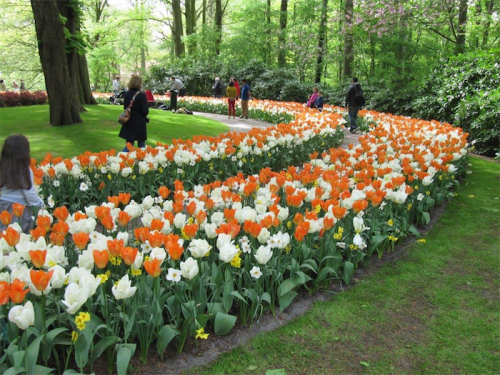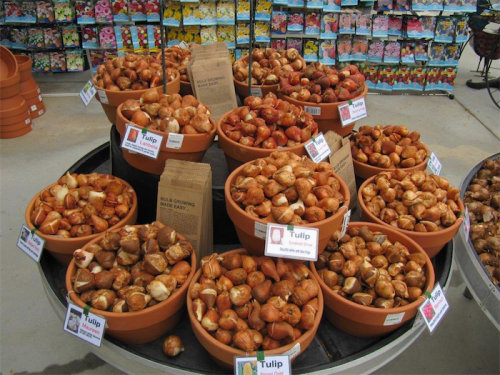
THE great spring bulb planting time is about to begin; bulk bulbs will arrive at local garden centres in the next couple of weeks as catalogues arrive in the mail for online ordering.

While there are many very reputable online bulb growers, when buying this way one doesn’t know the quality until the bulbs arrive. There really is nothing to replace selecting the best bulbs from a local garden centre.
Here are a few suggestions for the best results when buying spring bulbs:
- Always check each bulb is firm when gently pressed between thumb and forefinger. Softness is a sign of rot.
- Make sure the bulbs are a good size, generally the bigger the better. However, bulb size can vary between cultivars.
- Always store in a cool, dry place until planting, ideally in an open net bag, such as orange bags.
- Daffodils are best planted as soon as possible to make good root growth.
- Plant bulbs at the right height. Generally ignore most of those complicated charts showing bulb-planting depths. With most bulbs, plant the same depth or slightly more than the bulb is thick, ie if a daffodil bulb is 5cm thick (from top to bottom of bulb), then plant 5-10cm deep.
- Plant most bulbs in full sun. This can still be under deciduous trees that are bare in winter and generally still bare in spring when the bulbs flower. With only a few exceptions do not plant under evergreen trees with little sunlight to the bulbs.
- Plant in good fertile well-drained soil. In heavy or wet soils plant on raised beds. Improve the soil by digging in well-rotted compost or cow manure.
- Plant bulbs in colour groups close together to support each other in windy weather. At Floriade I notice bulbs are being planted further apart and infilled with annuals. An economic measure?
- Bulbs grow well in pots. Use premium-grade potting mix and don’t encourage root rot by putting a saucer under the pot. Place pots on terracotta feet.
- There is no need to fertilise until early spring with a good organic plant fertiliser.

The strength of glyphosate varies from 260 grams per litre to 490 grams per litre, all of which are usually diluted with water.
The strength depends on whether you are simply killing grassy type weeds or environmental weedy shrubs such as privet, pyracantha or nettle tree (Celtis Australis).
Always follow the manufacturer’s recommendation. However, if you are killing plants such as privet with thick stems, which can be as thick as my arm, I recommend the strongest such as Yates Zero Weedkiller Glyphosate 490 grams per litre.
It is vital to apply the glyphosate immediately to the cut after you have cut each shrub down. Either use a paint brush to apply undiluted or a 50/50 mix of glyphosate and water. Take care not to splash on nearby, desirable shrubs. A shrub can die from being exposed to just two per cent of glyphosate.
If you are unsure which are environmental weeds, collect the coloured brochure “Are your garden plants going bush?” from any ACT Government Shopfront.
Jottings…
- Bulbs planted in the wrong place (ie in too much shade) can be lifted and relocated at this time.
- With the risk of early autumn frosts, it might be best to leave citrus planting until late spring.
- Summer and early autumn flowering shrubs can be pruned once flowering is finished. Think the three “Ds” – remove dead, diseased and damaged branches. Then remove any crossing-over branches rubbing against each other.
- Remember, with veggies, if they’re in stock at garden centres it’s time to plant them.
Who can be trusted?
In a world of spin and confusion, there’s never been a more important time to support independent journalism in Canberra.
If you trust our work online and want to enforce the power of independent voices, I invite you to make a small contribution.
Every dollar of support is invested back into our journalism to help keep citynews.com.au strong and free.
Thank you,
Ian Meikle, editor




Leave a Reply